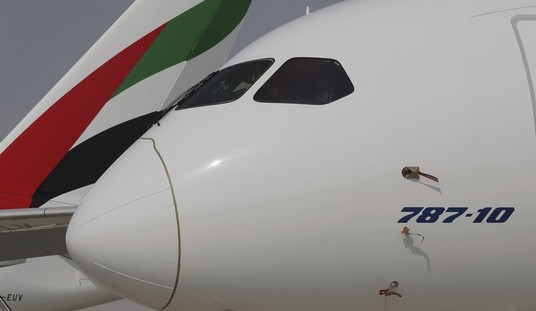John Burns of the NYT describes the virtual exchange of the Iranian uprising: the BBC Persian service. It, together with FaceBook, Twitter and the blogosphere, are what the Iranian government consider the center of the resistance against it.
As Iran’s ruling ayatollahs tell it, the main strike force plotting to end Islamic rule in their country is not on the streets of Tehran but on the upper floors of a celebrated Art Deco building in central London. … The propagators of an “all-out war” against the Islamic republic, as Iran’s semiofficial news agency has called them, are a group of 140 men and women who work at the BBC’s Broadcasting House, a stone’s throw from the shopping mecca of Oxford Street in London. Mainly expatriate Iranians, they staff the BBC’s Persian-language television service, on air for only six months and reaching a daily audience of six million to eight million Iranians — a powerful fraction of viewers in Iran, with its population of 70 million….
In the protests, an archaic political system has been shaken by the use of powerful new weapons: foreign-based satellite television channels like the BBC’s that beam their signals into Iran, social networking tools like Twitter and sites like Facebook that act as running diaries on the upheaval and as forums for coordinating protest activities, and cellphone videos that have captured the confrontation in Tehran for worldwide audiences, perhaps most importantly in Iran itself.
While Burns’ article may contain an element of hyperbole, there is no denying that information technology in its various forms has played a pivotal role in the dramatic events of the last weeks. Napoleon once said that a revolution “is an idea which has found its bayonets”. Where the Iranian bayonets are to come from is unknown, but at all events there must first be an idea; a source from which resistance is to originate, grow and spread. Now the idea is there. The news networks and the Internet have provided a fertile field for its spread of the idea; whether it will find its weapon is yet to be determined.
The irony of Barack Obama’s policy of reticence towards Iran is that it comes at a time in history when words would have had the greatest effect. Three years ago I gave a presentation in Israel arguing that encouraging blogs and other “Internet sensors” to multiply in the Arab world would create a kind of runaway transparency which would objectively work in the cause of peace. These ideas are described in a contemporaneous blog post called The Blogosphere at War at the old Belmont Club site. I said the creation of multiple information paths would create the architecture for facts themselves to perform an “end run” around the disinformation campaigns routinely practiced by Hezbollah. It would break down the apparatus of lies which totalitarian states used to deceive and enslave their population. I argued that we could never know the truth about future Qanas for as long as these multiple information paths did not exist. No information warfare organization has created them, but time itself has amended some of these deficiencies. Today in Iran, we are seeing, I think, the fruit of those “end run” information paths. And while neither the BBC, nor Facebook, nor Twitter are of themselves creating a revolution, they have provided the Iranian people the tools to do it. It sounded so far-fetched back in 2006. Today it is reality. Three years ago I wrote:
It is possible in principle to tune parts of the blogosphere to better serve the needs of information warfare. For example, certain types of blogs are sensitive to picking up particular signals at levels which the general press would be pressed to match. Blogs which monitor and transcribe Arabic language media broadcasts, for example, report on what would be regarded as arcana by many major news outlets. Many MSM organizations simply leave foreign language broadcasts beneath the media Event Horizon because they are too expensive to access. But blogosphere, with its potentially unlimited number of Finders can simply post away, leaving it to the Thinkers and Linkers to separate the signal from the noise and to amplify significant of interest. The blogs can even be tuned to pick up human atmospherics. Lisa Goldman of On the Face and Charles Chuman of the Lebanese Political Journal maintained an Israeli-Lebanese blogospheric dialogue even while both countries were at war. It was a dramatic human interest story that had the mainstream media riveted; but it was also an amazing demonstration of how even in wartime memes flow between sites on the Internet.
A number of Internet institutions have consciously attempted to improve the receptivity of their networks to certain signals. YouTube has made it far easier for the blogosphere to pick up video content and Flickr has performed the same service for still photographs. Today the blogosphere not only sucks up words, it sucks up images and sounds as well. Harvard Law School’s Global Voices project has encouraged the formation of blogs in Third World countries in order to float up stories that would otherwise go unreported. All these efforts are functionally Web 2.0 efforts to encourage publics to add content to the Internet. Collectively they have pushed an huge amount of data above the Event Horizon which would have gone unreported; and in volumes that may eventually dwarf that generated by the MSM. It is possible that in the long run the global public will come to rely on fellow Internet users to learn about the world more than it will from professional journalists. The blogospheric revolution may be just beginning.
Although the number of Thinkers as well of the number of Finders is bound to grow organically, it is in the obvious interest of information warriors to encourage more Thinkers — the equivalent of analysis cells — to follow issues of interest. First-class Think sites can dramatically improve the ability of the blogosphere to respond quickly and accurately to information that breaks across the Event Horizon. Blogs which follow particular countries or track certain issues, such as Regime Change Iran, begin to ascend a learning curve and progressively improve their ability to identify important issues and gauge the reliability of various sources from experience. The speed at which Thinkers can work enabled the blogosphere to respond within the “Golden Hour” of public discourse during the 2006 war with Hezbollah; and it responded with a velocity that at occasionally confounded the calculations of disinformation professionals who never dreamed that such an avalanche of scrutiny was possible.
I hardly ever find myself saying of my own past posts to to Read the Whole Thing. But the case of Blogosphere at War it might be worthwhile. Yet in retrospect it’s obvious that no government or political organization, however well intentioned were ever going to Johnny Appleseed the Internet with active information warfare terminals. I was foolish to bark up that tree. Every government and every politician wants to the control the message. A constituency that can’t be easy led by politicians, that gathers its own data and reaches its own consensus, if only to a limited extent, is a leader’s nightmare. It was probably inevitable that the creation of alternative information paths had to be left to the private sector, which had no governmental ambitions of its own.
That may work out for the best in the end. Perhaps it’s wrong to think that a word from Barack Obama can change history in Iran any longer. They, not he, are the people they’ve been waiting for. A self-driven, self-informing public may not need a One to lead it in the long run. If President Obama has chosen to stay silent at this time, then maybe it’s him who really missed the last chance to be heard before the tide of history moves on.









Join the conversation as a VIP Member